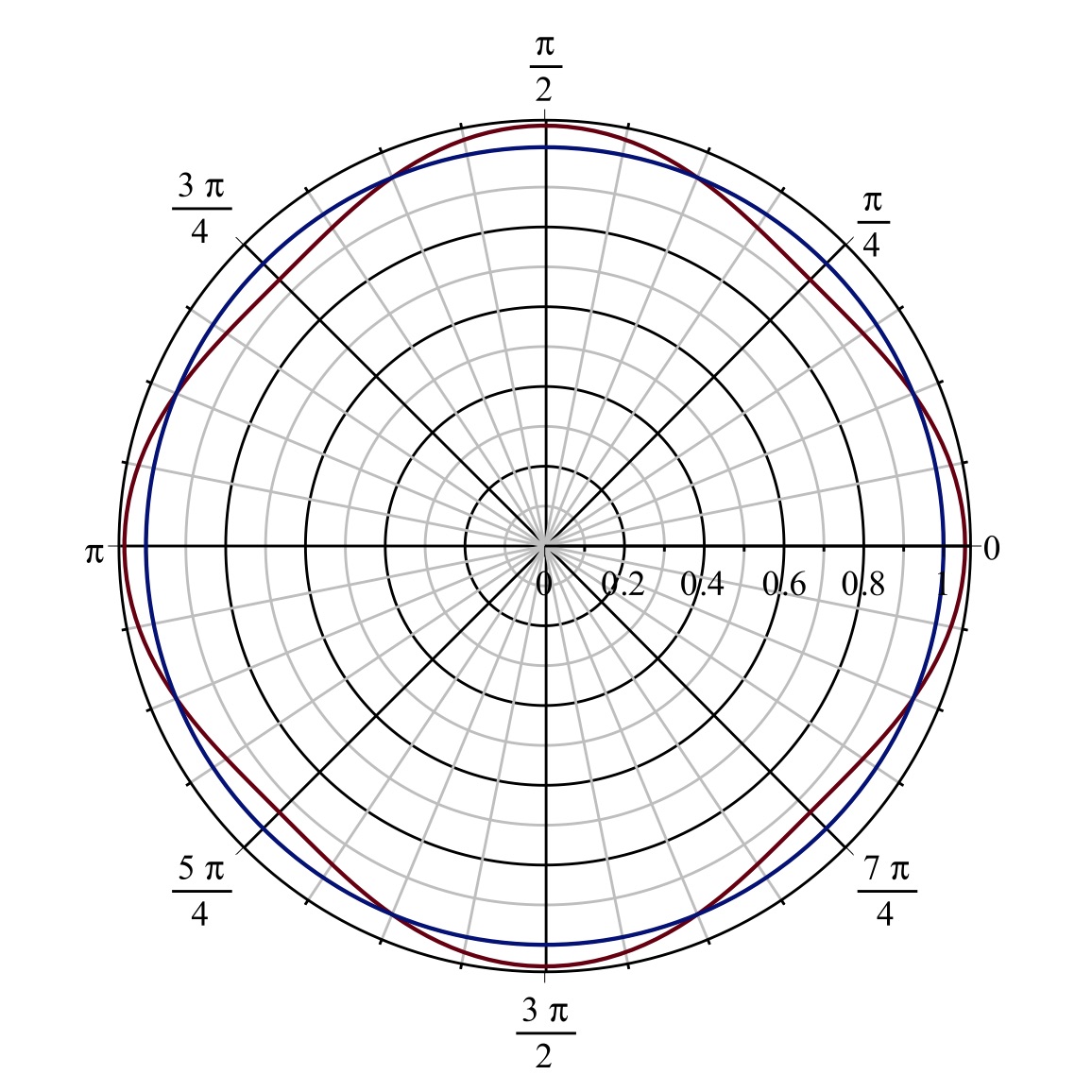Update: I previously claimed that I had a negative answer to question (a) in the centrally symmetric case, but thanks to Matt F. I found that there was an error in my calculation. I corrected the calculation, so what follows is not an answer but just a case study.
I'll consider the modified version of the problem where all sets are centrally symmetric (i.e., $K=-K$, $E=-E$). I'll normalize all areas to $\pi$ instead of $1$.
Let $\varepsilon$ be a parameter in the interval $(0,1)$.
Let $K_\varepsilon$ be the topological disk bounded by the Jordan curve given in polar coordinates by:
$$
r^2 = 1 + \varepsilon \cos 4 \theta .
$$
The figure shows the case $\varepsilon = 1/9$:

Obviously, $K_\varepsilon$ has area $\int_0^{2\pi} \frac{1}{2} r^2 d\theta = \pi$, and it is convex for $\varepsilon$ sufficiently close to $0$.
Note that $K_\varepsilon$ is invariant under $R_{\pi/2}$ (the rotation of $\pi/2$). Therefore if $E$ is a minimizing ellipse, so is $R_{\pi/2}(E)$. So, to prove that the minimizing ellipse is not unique, it is sufficient to show that the unit disk is not a minimizer.
Let $t$ be a real parameter and let $E_t$ be the ellipse with boundary $e^{t} x^2 + e^{-t}y^2 = 1$, or in polar coordinates $$ r^2 = \frac{1}{e^t \cos^2\theta + e^{-t} \sin^2\theta} =: f(\theta,t). $$ Note that $R_{\pi/2}(E_t) = E_{-t}$, and so the function $A(t) := \mathrm{area}(K_\varepsilon \vartriangle E_t)$ is even.
Let $g(\theta):= 1+\varepsilon \cos 4\theta$ and $h(\theta,t) := f(\theta,t) - g(\theta)$. For $t$ sufficiently close to zero, the function $\theta \mapsto h(\theta,t)$ has two roots in the interval $[0,\pi/2]$, say $\alpha(t) < \beta(t)$. Then $$ A(t) = 2 \, \mathrm{area}(E_t \smallsetminus K_\varepsilon) = 2 \times 4 \int^{\beta(t)}_{\alpha(t)} \frac{1}{2} h(\theta,t) d\theta . $$ By the Leibniz integral rule, $$ \frac{1}{4} A'(t) = \int^{\beta(t)}_{\alpha(t)} h_t(\theta,t) d\theta + \underbrace{h(\beta(t),t)}_{0} \beta'(t)- \underbrace{h(\alpha(t),t)}_{0} \alpha'(t) $$ and $$ \frac{1}{4} A''(t) = \int^{\beta(t)}_{\alpha(t)} h_{tt}(\theta,t) d\theta + h_t(\beta(t),t) \beta'(t) - h_t(\alpha(t),t) \alpha'(t) . $$ Substituting $t=0$ and using the Implicit Function Theorem, $$ \frac{1}{4} A''(0) = \int_{\pi/8}^{3\pi/8} h_{tt}(\theta,0) d\theta - \frac{[h_t(3\pi/8,0)]^2}{h_\theta(3\pi/8,0)} + \frac{[h_t(\pi/8,0)]^2}{h_\theta(\pi/8,0)}. $$ Some calculations show that: $$ h_t(\theta,0) = -\cos 2\theta, \quad h_{tt}(\theta,0) = \cos 4\theta, \quad h_{\theta}(\theta,0) = - 4 \varepsilon \sin 4\theta. $$ Substituting we get: $$ \frac{1}{4} A''(0) = \int_{\pi/8}^{3\pi/8} \cos 4\theta d\theta + \frac{[1/\sqrt{2}]^2}{4\varepsilon \times 1} - \frac{[-1/\sqrt{2}]^2}{4\varepsilon \times (-1)} = -\frac{1}{2} + \frac{1}{4\varepsilon}. $$ So $A''(0) < 0$ (which would yield non-uniqueness of the minimizer ellipe) iff $\varepsilon>1/2$. However, $K_\epsilon$ is convex iff $\varepsilon \leq 1/9$, as one can easily check.
